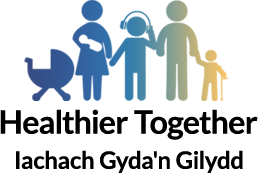What happens straight after the birth?
It's natural to focus on your baby's birth while you're pregnant. But it's a good idea to also know what to expect after labour.

Skin to skin contact
Skin to skin contact really helps with bonding. It's a good idea to have your baby lifted onto you as soon as they're born and before the cord is cut so you can be close to each other straight away.
When the cord is clamped, your baby is dried and then covered with a towel to stop them getting cold. You can continue to hold and cuddle your baby.
Read more about skin to skin contact here
Your baby may have some of your blood on their skin and perhaps vernix, the greasy white substance that protects your baby's skin in the womb.
Mucus may need to be cleared out of your baby's nose and mouth.
Some babies need a bit of help to get their breathing established.
Your baby may be taken to another part of the room to have some oxygen. They'll brought back to you as soon as possible.
Your baby will be examined by a midwife or neonatologist (a doctor who specialises in the care of newborn babies), then weighed and possibly measured, and given a band with your name on.
Feeding your baby in the first few hours
Holding your baby against your skin straight after birth will calm your baby. It will also steady his breathing and help to keep him warm. This is a great time to start your first breastfeed because your baby will be alert and will want to feed in the first hour after birth. Your midwife will help you with this
Top Tips
- Keep your baby in skin to skin for as long as possible, until after the first breast feed, and any other time you would like.
- Your baby may “self-attach” if you don’t wash your breasts until after the second feed.
- Ask for help whenever you need.
- Your baby should be offered a second feed within 6 hours
Look for your baby's feeing cues
- Baby will stir
- Look around
- Stretch
- Yawn
- Suck their fingers.
Please click her for further information on feeding your baby
Vitamin K for newborn babies
You'll be offered an injection of vitamin K for your baby. This helps prevent a rare bleeding disorder called haemorrhagic disease of the newborn.
Your midwife will discussed vitamin k with you while you were pregnant and after the birth of your baby.
Read more about vitamin K here
Stitches for tears or cuts
Small tears and grazes are often left without stitches because they usually heal better this way.
Please click here for information and advice on tears during childbirth.
If you have already had an epidural, it can be topped up. If you haven't, you will be offered a local anaesthetic to numb the area.
Your midwife or maternity support worker will help you wash and freshen up before you go to the postnatal ward.
Preventing bleeding after the birth
Postpartum haemorrhage (PPH) is a rare complication where you bleed heavily from the vagina after your baby's birth.
There are 2 types of PPH, depending on when the bleeding takes place:
primary or immediate – bleeding that happens within 24 hours of birth
secondary or delayed – bleeding that happens after the first 24 hours and up to 6 weeks after the birth
Sometimes PPH happens because your womb doesn't contract strongly enough after the birth.
It can also happen because part of the placenta has been left in your womb or you get an infection in the lining of the womb (endometritis).
To help prevent PPH, you'll be offered an injection of oxytocin as your baby's being born. This stimulates contractions and helps to push the placenta out.
Please click here for further information on what to expect after birth
Now read about you and your body after the birth.




